Choosing the Right Birth Control
It's easy to be overwhelmed when thinking about starting birth control. There are so many options out there, it's hard to even keep track.
We chose 12 of the most popular birth control methods—including condoms, the pill, the sponge, IUDs, vaginal ring, the morning-after pill, and more—and highlighted the pros and cons of each based on effectiveness, cost, flexibility, and side effects. They’re presented in the order of their effectiveness in preventing pregnancy, according to Planned Parenthood, along with their costs as of 2013.
Learn About Emergency Contraception
Want to know the effectiveness of condoms? Got ya covered. How safe is the morning-after pill? Read ahead to find out. Contemplating the new intrauterine devices or the ring? They are in here, too.
Check out a visual guide of how birth control affects your body »
Part 2 of 14:
Hormonal Intrauterine Device (IUD)
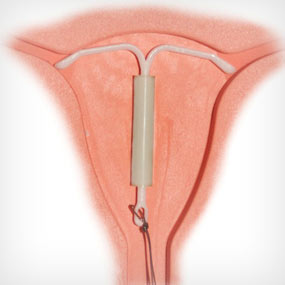
What is it? The Mirena IUD is a small, T-shaped device made of flexible plastic that releases a small amount of progestin on a regular schedule. Inserted by a doctor, the IUD works by preventing sperm from joining with an egg. The progestin thickens a women's cervical mucus and keeps sperm from reaching an egg. Costs about $500-1,000.
Effectiveness: More than 99 percent effective (Planned Parenthood, 2013)
Pros: It lasts five years, and is effective and completely undetectable during sex with no hassle before or after. Progestin may reduce cramps and make your period lighter.
Cons: After insertion, you may have a few days of mild cramping or a backache and, for the first three to six months, spotting between periods and/or irregular periods.
Part 3 of 14: ParaGard IUD
Copper Intrauterine Device (IUD)
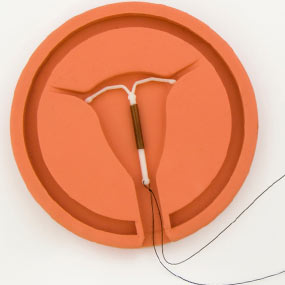
What is it? The ParaGard IUD is a small, T-shaped device made of flexible plastic and copper. A doctor or registered nurse inserts it into a woman's uterus. It works by preventing sperm from joining with an egg. Costs about $500-1,000 and lasts up to 12 years.
Effectiveness: More than 99 percent effective (Planned Parenthood, 2013)
Pros: It's long-lasting and highly effective. IUDs are completely undetectable during sex, and there is no hassle before or after. The copper IUD does not change your natural hormone levels.
Cons: The potential negative side effects for the ParaGard IUD are the same as for the Mirena IUD.
Part 4 of 14: Implant
The Implant
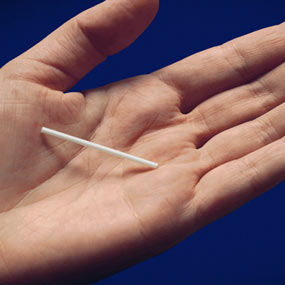
What is it? It's a small piece of flexible plastic implanted under the skin of the upper arm. The implant releases progestin into the body, which keeps sperm from joining with an egg. Insertion takes a few minutes, and the implant lasts for up to three years. Costs about $400-800.
Effectiveness: More than 99 percent effective (Planned Parenthood, 2013)
Pros: It's long-lasting and effective. It's low profile and causes no hassle before, during, or after sex.
Cons: You have to go through minor surgery. Irregular bleeding during the first six to 12 months is common.
Part 5 of 14: Shot
The Shot
What is it? A single shot in the arm releases the hormone progestin, which thickens cervical mucus and thins the endometrium. It may also prevent ovulation, keeping sperm from joining with an egg.
Costs about $35-75 per injection.
Effectiveness: 94-99 percent effective (Planned Parenthood, 2013)
Pros: Administered by a doctor once every three months. Progestin can reduce menstrual bleeding and cramping and doesn't have many of the negative side effects of estrogen.
Cons: The effects are long-lasting, so if you are thinking of getting pregnant soon, it's probably not for you. Possible progestin side effects include irregular periods, sore breasts, headache, nausea, and more. Most side effects go away within three months. Rarer side effects include weight gain and changes in sex drive, among others.
Part 6 of 14: Pill
The Pill
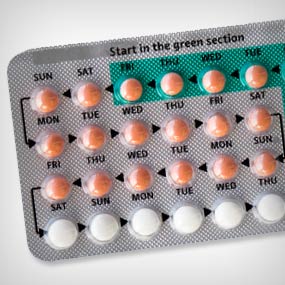
What is it? It's an oral contraceptive containing estrogen and progestin. Estrogen stops egg production; progestin keeps sperm from reaching an egg. Costs $14-50 per month.
Effectiveness: 91-99 percent effective (Planned Parenthood, 2013)
Pros: No hassle before sex. The hormones can cause lighter periods and provide protection against acne, certain cancers, pelvic inflammatory disease, and ovarian cysts.
Cons: Skipping a day increases risk of pregnancy that day. Side effects might include nausea, vomiting, and spotting. Combining estrogen and progestin slightly increases the chance of some rare but serious problems such as blood clots, heart attack, or stroke.
Part 7 of 14: Ring
Contraceptive Vaginal Ring
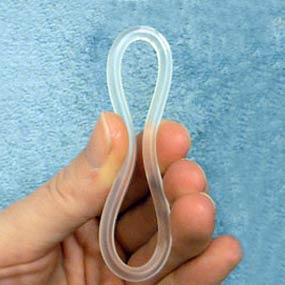
What is it? It's a small plastic ring inserted into the vagina once a month and left there for three weeks. It's taken out for the fourth week of the month. The ring releases estrogen and progestin into the body. Estrogen stops egg production; the progestin thickens a women's cervical mucus and keeps sperm from reaching an egg. Costs about $15-80 per month.
Effectiveness: 91-99 percent effective (Planned Parenthood, 2012)
Pros: Only two things to remember: Put the ring in on first day of month: take it out three weeks later. For positive side effects of estrogen and progestin, see the section on hormonal IUDs.
Cons: For potential negative side effects of estrogen and progestin, see the section on hormonal IUDs.
Part 8 of 14: Patch
Contraceptive Patch
What is it? It's a thin patch that sticks to the skin and releases the hormones estrogen and progestin into the body. Estrogen stops egg production; the progestin thickens a women's cervical mucus and keeps sperm from reaching an egg. Costs about $15-80 per month.
Effectiveness: 91-99 percent effective (Planned Parenthood, 2012)
Pros: You put a new patch on the skin only once a month. For potential positive side effects of estrogen and progestin, see the section on hormonal IUDs.
Cons: For potential negative side effects of estrogen and progestin, see the section on hormonal IUDs.
Part 9 of 14: Morning-After Pill
Morning-After Pill
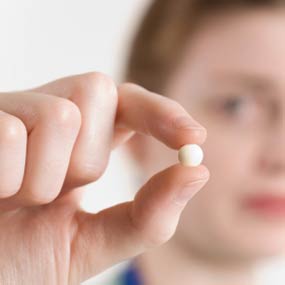
What is it? It is the only type of birth control taken after sex. It can be taken up to five days after. It uses the same hormones as a birth control pill, but in slightly greater amounts. It is available at drugstores without a prescription if you are over 17. Costs $10-70.
Effectiveness: 89 percent effective when started within 72 hours after unprotected intercourse (Planned Parenthood, 2012)
Pros: In the case of an accident or emergency, the morning-after pill is your best option.
Cons: About 50 percent of women who take the morning-after pill feel queasy, but it usually goes away in under 24 hours. Other, less common side effects are abdominal pain,fatigue, headache, dizziness, and breast tenderness. Taking the morning-after pill too often can cause irregular periods.
Part 10 of 14: Diaphragm
Diaphragm
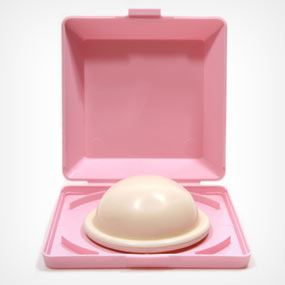
What is it? It's a dome-shaped cup with a flexible ring made of latex that is inserted into the vagina to cover the cervix. It blocks the opening to the uterus and prevents sperm from joining with an egg. Costs about $15-75 and lasts two years.
Effectiveness: 88-94 percent effective (Planned Parenthood, 2012)
Pros: It's immediately effective and has no effect on your hormones. It can also be inserted hours ahead of time, so you don't have to worry about dealing with it just before sex. Most people say they don't feel it during sex.
Cons: It requires a prescription and can't be used during your period. In some rare cases, it can cause urinary tract infections or allergy-related vaginal irritation.
Part 11 of 14: Male Condom
Male Condom
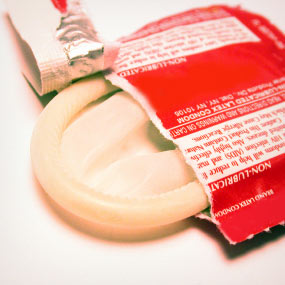
What is it?It's a thin latex sheath worn on the penis during intercourse, in order to collect semen and prevent sperm from entering the vagina. Condoms come in lots of shapes and sizes. They cost about $1 each.
Effectiveness: 82-98 percent effective (Planned Parenthood, 2012)
Pros: Condoms are inexpensive and accessible and can be used in conjunction with other forms of birth control. Condoms also significantly reduce your risk for sexually transmitted infections.
Cons: About 3 million people in the U.S. are allergic to latex (American Latex Allergy Association, 2013) and need to use non-latex condoms. Condoms can reduce sensitization; some couples feel that they can have a negative effect on the quality of their sex life.
Part 12 of 14: Female Condom
Female Condom
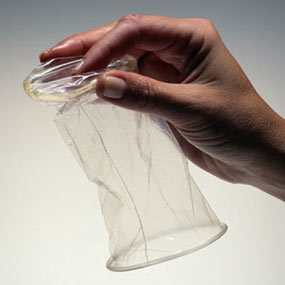
What is it? It's a plastic pouch with flexible plastic rings at each end. Before sex, it's inserted into the vagina; the ring at the closed end holds the pouch in the vagina, and the ring at the open end stays outside the vaginal opening during sex. They cost about $4 each.
Effectiveness: 79-95 percent effective (Planned Parenthood, 2012)
Pros: It's easy to get, and it puts women in control of pregnancy prevention. Female condoms cause no hormonal changes and decrease risk for sexually transmitted infections.
Cons: Some couples feel that using a female condom has a negative effect on the quality of their sex life; it can be noisy and reduce feeling during intercourse. It can cause irritation.
Part 13 of 14: Sponge
Contraceptive Sponge
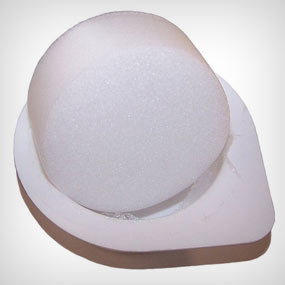
What is it? Made of soft foam, the sponge is round and usually two inches in diameter. Prior to intercourse, it is inserted into the vagina. It covers the cervix and blocks sperm. Costs about $9-15 for a package of three.
Effectiveness: 88-91 percent for those who have not given birth, 76-80 percent for those who have (Planned Parenthood, 2012)
Pros: It does not require a prescription and lasts up to 30 hours, during which you can have sex as much as you like without removing the sponge. It has no effect on your hormones and is unobtrusive during sex.
Cons: Some may find it tricky to insert or remove. Some couples find it makes intercourse too wet or too dry.
Hello viewers around the Globe, I was despondent because i had a very small penis, about 2.5 inches soft and 4 inches hard not nice enough to satisfy a woman, i have been in so many relationship, but cut off because of my situation, i have used so many product which doctors for me, but none could offer me the help i searched for. i saw some few comments on the INTERNET about this specialist called Dr,OLU and decided to contact him on his email: Drolusolutinthome@gmail.com) so I decided to give his herbal product a try. i emailed him and he got back to me, he gave me some comforting words with his herbal pills for Penis Enlargement, Within 3 week of it, i began to feel the enlargement was surprised when she said that she is satisfied with my sex and i have got a large penis. Am so happy, thanks to Dr OLU I also learn that Dr OLU also help with Breast Enlargement Hips and Bums Enlargement etc.. If you are in any situation with a little Penis, weak ejaculation, small breast_hips_bums do get to Dr OLU now for help on his email (Drolusolutionhome@gmail.com) or add him on whatsapp line +2348140654426
ReplyDeleteHello viewers around the Globe, I was despondent because i had a very small penis, about 2.5 inches soft and 4 inches hard not nice enough to satisfy a woman, i have been in so many relationship, but cut off because of my situation, i have used so many product which doctors for me, but none could offer me the help i searched for. i saw some few comments on the INTERNET about this specialist called Dr,OLU and decided to contact him on his email: Drolusolutinthome@gmail.com) so I decided to give his herbal product a try. i emailed him and he got back to me, he gave me some comforting words with his herbal pills for Penis Enlargement, Within 3 week of it, i began to feel the enlargement was surprised when she said that she is satisfied with my sex and i have got a large penis. Am so happy, thanks to Dr OLU I also learn that Dr OLU also help with Breast Enlargement Hips and Bums Enlargement etc.. If you are in any situation with a little Penis, weak ejaculation, small breast_hips_bums do get to Dr OLU now for help on his email (Drolusolutionhome@gmail.com) or add him on whatsapp line +2348140654426